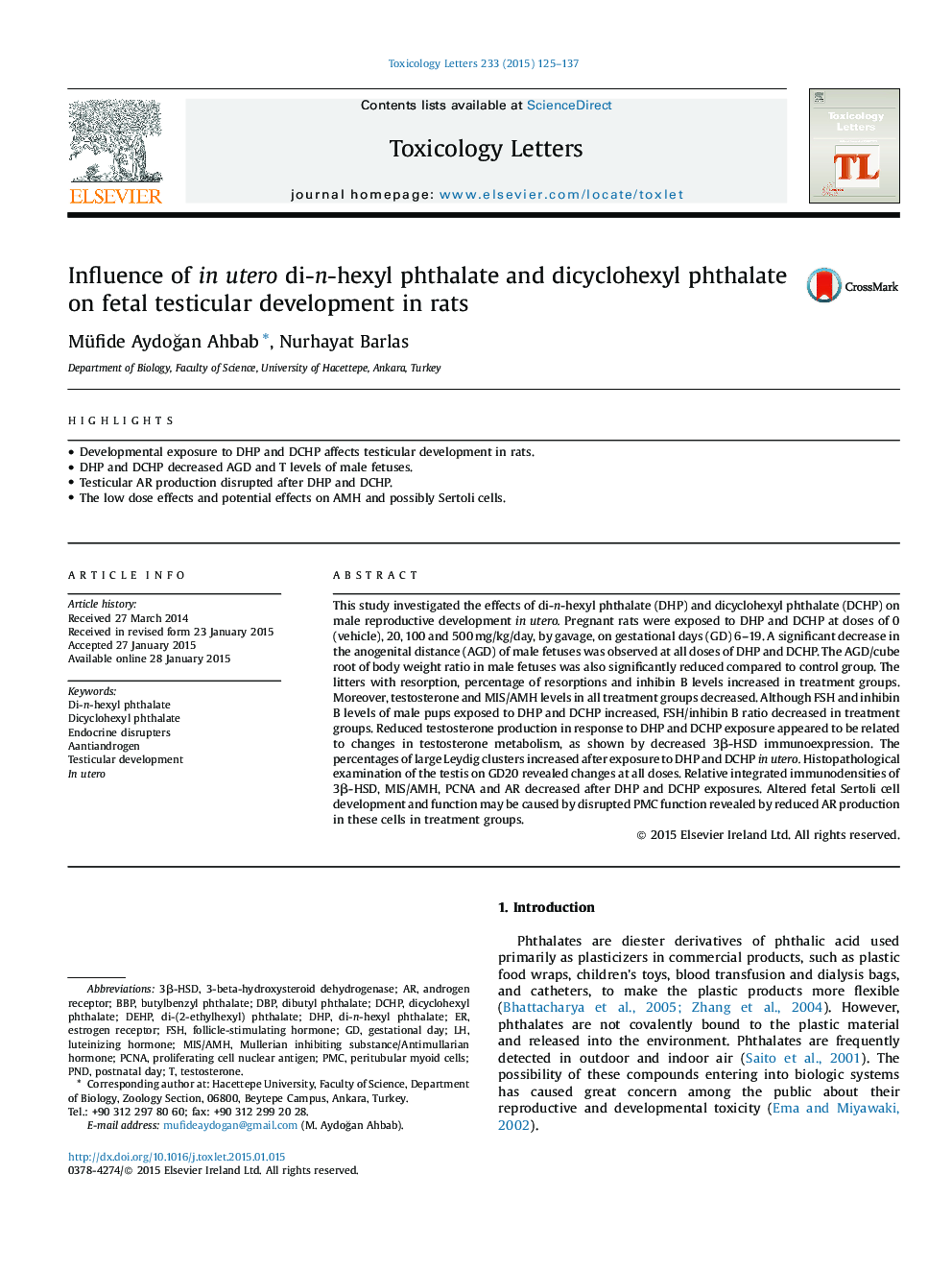| Article ID | Journal | Published Year | Pages | File Type |
|---|---|---|---|---|
| 5859907 | Toxicology Letters | 2015 | 13 Pages |
Abstract
This study investigated the effects of di-n-hexyl phthalate (DHP) and dicyclohexyl phthalate (DCHP) on male reproductive development in utero. Pregnant rats were exposed to DHP and DCHP at doses of 0 (vehicle), 20, 100 and 500 mg/kg/day, by gavage, on gestational days (GD) 6-19. A significant decrease in the anogenital distance (AGD) of male fetuses was observed at all doses of DHP and DCHP. The AGD/cube root of body weight ratio in male fetuses was also significantly reduced compared to control group. The litters with resorption, percentage of resorptions and inhibin B levels increased in treatment groups. Moreover, testosterone and MIS/AMH levels in all treatment groups decreased. Although FSH and inhibin B levels of male pups exposed to DHP and DCHP increased, FSH/inhibin B ratio decreased in treatment groups. Reduced testosterone production in response to DHP and DCHP exposure appeared to be related to changes in testosterone metabolism, as shown by decreased 3β-HSD immunoexpression. The percentages of large Leydig clusters increased after exposure to DHP and DCHP in utero. Histopathological examination of the testis on GD20 revealed changes at all doses. Relative integrated immunodensities of 3β-HSD, MIS/AMH, PCNA and AR decreased after DHP and DCHP exposures. Altered fetal Sertoli cell development and function may be caused by disrupted PMC function revealed by reduced AR production in these cells in treatment groups.
Keywords
PCNAPeritubular myoid cellsdi-n-hexyl phthalateDCHP3-beta-hydroxysteroid dehydrogenaseDHP3β-HSDDBPPNDPMCdibutyl phthalateDEHPdi-(2-ethylhexyl) phthalateProliferating Cell Nuclear Antigenendocrine disruptersbutylbenzyl phthalatetestosteroneTesticular developmentBBPIn uteroDicyclohexyl phthalategestational daypostnatal dayfollicle-stimulating hormoneluteinizing hormoneFSHAndrogen ReceptorEstrogen receptor
Related Topics
Life Sciences
Environmental Science
Health, Toxicology and Mutagenesis
Authors
Müfide AydoÄan Ahbab, Nurhayat Barlas,
